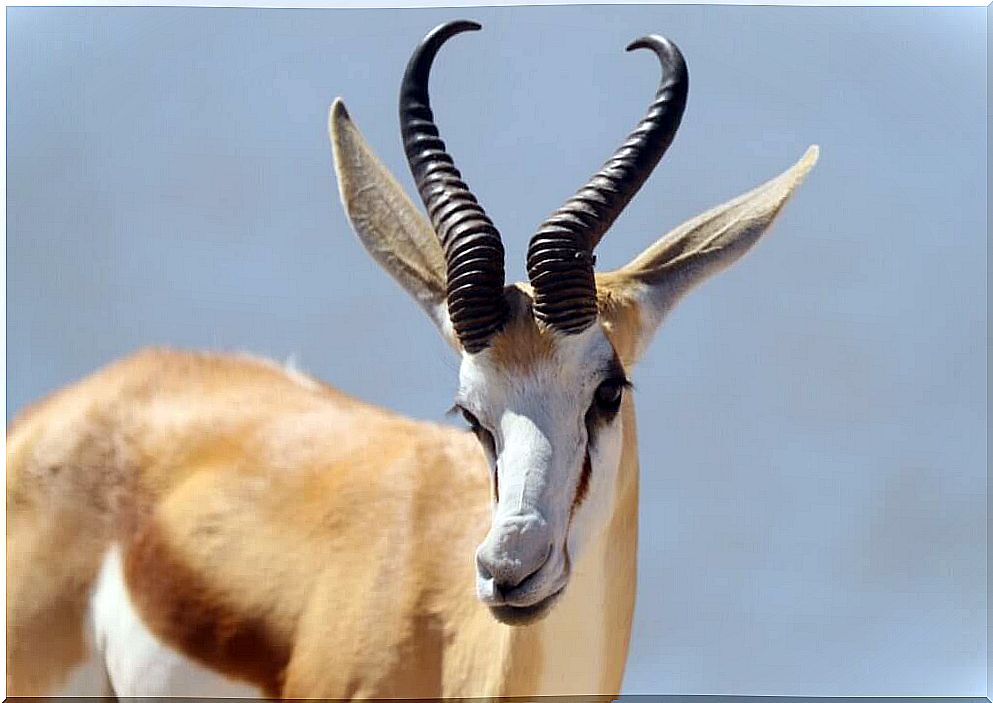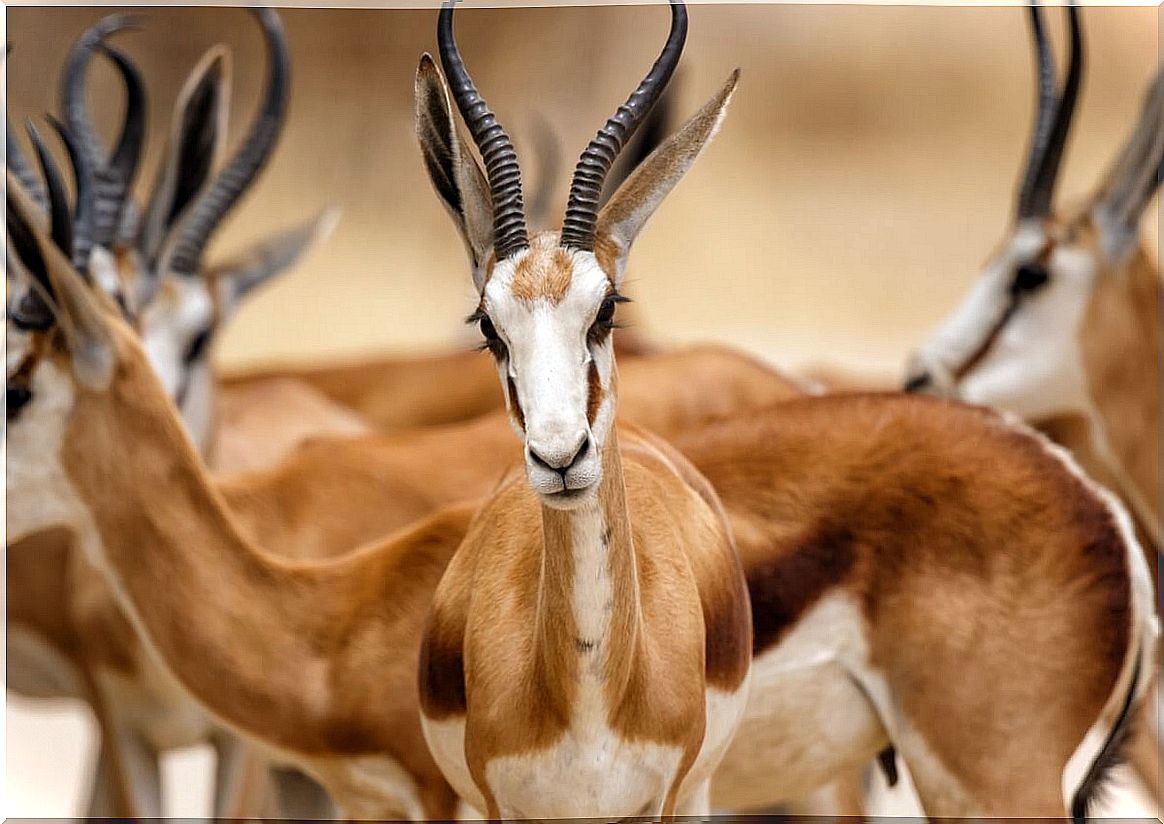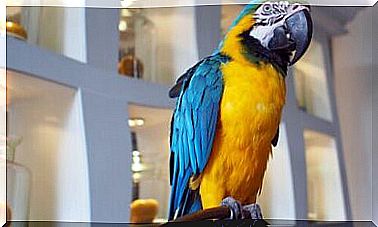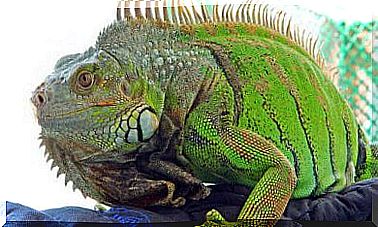Fan Goat: Characteristics, Distribution And Habitat

The wild goat ( Antidorcas marsupialis ) is a species of medium-sized antelope that can be found in southern Africa. We are facing an atypical case in terms of conservation, since not only are the wild goats not at risk of extinction, but also their populations have increased in size over time.
It is estimated that, today, there are 1 750 000 breeding specimens in their natural environment. In addition, this species was introduced into Mexico for harvesting purposes, where it occupies about 17,000 hectares of land. If you want to know everything about this bovine as graceful as it is beautiful, we encourage you to keep reading.
Taxonomy and systematics of the wild goat
First, it is important to highlight that the fan goat is a mammal, that is, it belongs to the Mammalia class . If we continue in its phylogenetic branch, we will see that this species belongs to the order of artiodactyls ( Artiodactyla ), a group of ungulate animals whose ends end in an even number of fingers, leaning on at least 2.
This graceful-looking mammal belongs to the bovine family ( Bovidae ), which also includes domestic goats, cows, sheep, bison and other antelopes. The fan-goat is the only representative of its genus, but it is divided into three different subspecies. Are the following:
- Antidorcas marsupialis angolensis: can be found in southwestern Angola. It is medium in size compared to the rest of the described subspecies.
- Antidorcas marsupialis hofmeyri: can be found in southwestern Africa, more specifically in the regions of Beersheba and Namaqualand. It is the largest subspecies.
- Antidorcas marsupialis marsupialis: it is mainly distributed in the Cape of Good Hope and adjacent areas. It is the smallest of the 3 described subspecies.

Physical description
The fan goat does not belong to the genus Gazella , which gathers small antelopes . This bovine is very similar externally to typical gazelles, but has 5 pairs of chewing teeth in the jaw, while representatives of the Gazella group have 6 pairs.
In addition, fang goats have a skin fold that extends along the entire dorsal midline to the tail, a feature absent from their relatives. Otherwise, these animals are medium in size, measuring about 70 or 80 centimeters from the extremities to the shoulders. In terms of length, they reach about 150 centimeters, with about 25 centimeters of tail.
There are differences in size and weight between the subspecies, but they usually range between 27 and 40 kg of body mass. Its general color is cinnamon brown, with a kind of white “mask” around the nose and eyes, with a pair of brown stripes that go from the tear to the corner of the mouth.
Habitat and customs
These animals live in the savannas of southern Africa, so they are perfectly adapted to withstand the heat and lack of water. Their activity depends on the weather, as they forage at night during the hottest times, while in the colder months their peak of activity is during the day.
The wild goat is eminently herbivorous and, therefore, its only food source is vegetables. When it can, it carries out grazing activities, that is, it feeds on short-stemmed herbaceous plants. When the lack of water dominates the ecosystem and the grass dries out, it changes strategy and starts consuming the leaves of certain trees.
As a curiosity, it is important to highlight that these bovines can go a long time without drinking water, as they are organisms totally adapted to the dry seasons. Fantastic goats get virtually all the water content they need for their food and can even survive a lifetime without drinking water.
Lions and leopards are the main predators of these goats. In order to escape, they developed unusual running speeds: up to 88 kilometers per hour.
Reproductive mechanism of the wild goat
Females are receptive to reproduction throughout the year, but are more likely to mate with a male when resources are plentiful, during the rainy season. In addition, females reach reproductive maturity at 7 months of age, while males are unable to produce sperm until 2 years of age.
These animals have harem-like social structures, with dominant males and a clear gender imbalance. Males often fight each other over females and territory, and they also expend a lot of their energy in order to impress potential mates, jumping up to 6 feet above the ground – a behavior known as pronking.

A species in a healthy state
Surprisingly, populations of this species are now considered stable. The International Union for the Conservation of Nature (IUCN) considers the wild goat as an animal of little concern, as there are no factors that threaten its survival.
And we go further, as it has been shown to be one of the few antelopes that has positive population trends today. Fortunately, it looks like the wild goat will continue to tint our ecosystems with color and grace for years to come.









